Trees of Puerto Rico: Part 3 (DACEXC, MANBID, and SLOBER)
The climax forest here at the field station is the Tabonuco forest. This is the forest type which, barring disturbance, would eventually cover all of the land up here. These three tree species are some of the most common trees of the Tabonuco forest.
DACEXC, (Dacryodes excelsa), Tabonuco or Candlewood
DACEXC can get to be a pretty big tree (we’ve seen some with diameters greater than half a meter). They have pinnately compound leaves, such that the leaflets come off along a central stalk with a bud at the base. The leaflets are opposite, with a terminal leaflet on most leaves. However, these trees are much easier to ID when they are bigger, and you can see the trunk.
These trunks often produce a clear-white resin that oozes out of any holes in the stem (such as from a nail hole where a tag is attached). This resin has a strong smell, somewhat similar to resin of conifers back in the US. I can usually smell a big DACEXC before I can see it out in the woods.
MANBID, (Manilkara bidentata), Bulletwood
These trees have very thick simple leaves (they sort of look like rhododendron) and looping branches. They are pretty abundant in the relatively pristine southern portion of the Big Grid. We see plenty of them low to the ground about the size of the one in the picture above, but every now and then we get to see a big one.
These trunks are fairly distinct in this forest where most of the trees have rather smooth bark. The distinct vertical pattern of the bark and the reddish color help to identify them.
SLOBER, (Sloanea berteriana), Bullwood
The best way that I have for identifying these trees is to look at the leaf petiole. It is usually double-arced, with a big bulge where the second curve begins. The leaves are variable, but can get quite large, among the largest leaves I’ve seen.
Larger trees often have thin, reddish buttresses. The trunk itself may even be reddish near the base. We’ve seen plenty of these in the field (we had a couple of subplots with about a dozen SLOBERs in them). It is always amusing (in a fresh-out-of-college, immature way) that the species code for this tree is pronounced the same as “slobber”, which we call back and forth across the plot on a regular basis. The leaves do have a pretty long drip tip, so when it rains you don’t want to stand under a SLOBER, or you may get wet.
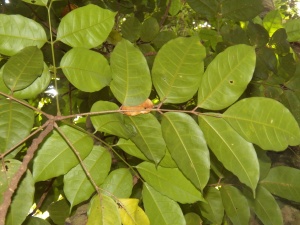
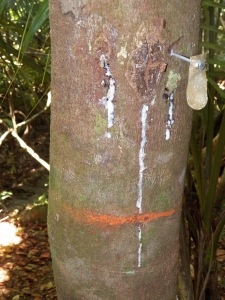
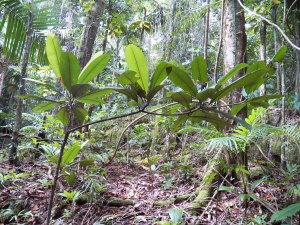
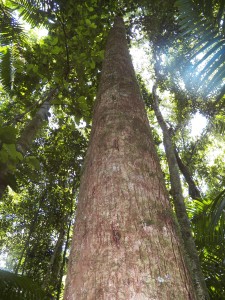
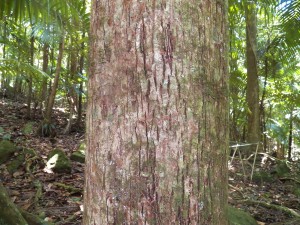
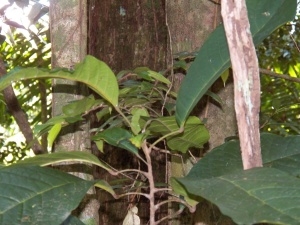
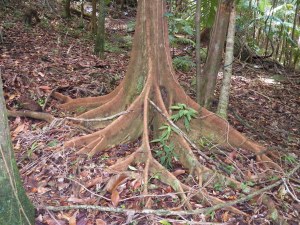
these are great — I’m learning a lot.
Do you need any benadryl ?????